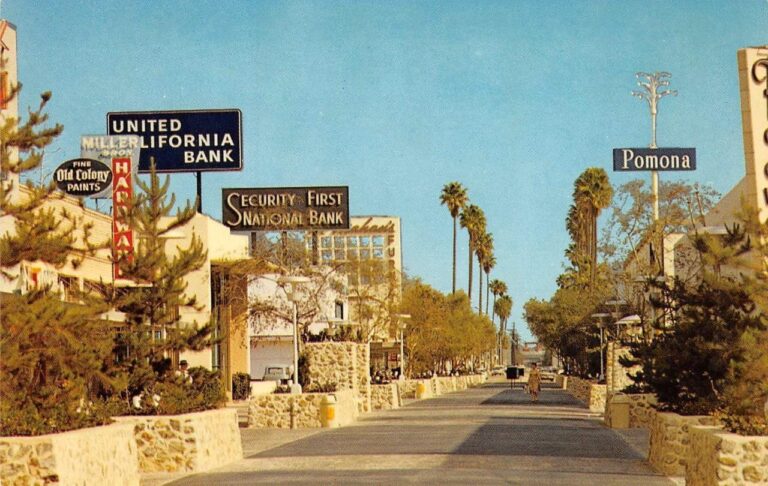Physical Address
304 North Cardinal St.
Dorchester Center, MA 02124
Physical Address
304 North Cardinal St.
Dorchester Center, MA 02124

Urbanists love to celebrate, and replicate great urban spaces – and sometimes can’t understand why governments don’t: But what’s important to recall – especially for those of us under, uh, 41 – is that pedestrianized streets aren’t a new concept coming into style, they’re an old one that’s been in a three-decade decline. Samantha Matuke, Stephan Schmidt, and Wenzheng Li tracked the rise and decline of the pedestrian mall up to the onset of the pandemic. Even in the urbanizing 2000s and 2010s, 14 pedestrian malls were “demalled” against 4 streets that were pedestrianized: In a 1977 handbook promoting pedestrianization, Roberto Brambilla and Gianni Longo admit that some of the earliest “successes” had already failed: In Pomona, California, the first year [1962] the mall received nationwide press coverage as a successful model of urban revitalization; there was a 40 percent increase in sales. But the mall was slowly abandoned by its patrons, and now, after fifteen years of operation, it is almost totally deserted. A Handbook for Pedestrian Action, Roberto Brambilla and Gianni Longo, p. 25 One obvious reason for the failure of many other pedestrianized streets is that they were too little, too late. The pedestrian mall was one of several strategies against the overwhelming ebb tide of retail from downtowns in the postwar era. They weren’t seen as alternatives to driving, but destinations for drivers, who could park in the new, convenient downtown lots that replaced dangerous, defunct factories. A minority of the postwar-era malls survived. The predictors of survival are sort of obvious in hindsight: tourism, sunny weather, and lots of college students, among other things. Some of the streets which were “malled” and “demalled” have rebounded nicely in the 2000s. The slideshow below shows Sioux Falls’ Phillips Avenue in 1905, 1934, c. 1975, and 2015. The […]
1. Mumbai is rethinking its density bonuses for developers who build parking lots and hand them over free of charge to the city. 2. Tort liability driving away possible MARC operators. 3. San Mateo County legislators threaten to charge San Franciscans a congestion charge similar to the one that the city is proposing to charge San Mateo (and East and North Bay) commuters. Bring it on, I say – it’s about time drivers were charged for using local roads. 4. The Supreme Court refuses to hear West Harlem business owners’ appeal against the city’s decision to use eminent domain to hand Manhattanville over to Columbia University. 5. The NYT has a story about a commercial kitchen-for-rent in Queens, calling it a “lifeline” for for “100 small businesses.” It’s a nonprofit, but even renting a space there for 6.5 hours in the middle of the night costs $154. I’m still waiting for the Times story about the many more people who cook illegally out of their own homes and whose businesses are therefore stunted and precarious, all because they can’t afford to comply with the city’s onerous health and zoning codes. 6. The US may have 1 billion parking spaces. This does not in and of itself prove that we have too much, but for those of us who already believe that zoning codes mandate more parking than the market would provide (for which there is good empirical evidence), it’s a horrifying thought. 7. Yonah Freemark discusses how Hong Kong’s transit agency uses property development to internalize positive transit externalities and maintain (relative) independence from the municipality. 8. The WSJ reports on the strong market for downtown office space, especially compared to declining suburban office parks.
I know I’ve kind of beaten this horse dead, but this environmentalism vs. density stuff just enrages me too much to relegate it to a link list. Here are some excerpts from an article about how the EPA’s proposed new rules for cleaning up the Chesapeake Bay could impede dense, environmentally-friendly development: For decades, the federal Clean Water Act has tried to get communities to reduce the effects of stormwater runoff. Heavy rains often carry fertilizers and soil into streams and rivers — ultimately killing aquatic life in vulnerable bodies like Chesapeake Bay. In response to tightening federal requirements, the state of Maryland is putting together a regulatory system that aims to cut the amount of nitrogen, phosphorus, and sediment flowing into the degraded Bay. But opinion is sharply divided over whether the plan will have a good or bad effect on the character and location of future development. […] In the letter, Potter warned, however, that there are “potential conflicts between the TMDL mandate and Smart Growth” — conflicts that neither the state of Maryland nor the Environmental Protection Agency has adequately addressed. “I believe the WIP will definitely make it harder to do low-density greenfield sprawl,” says a forum organizer, Stuart Sirota, principal of the New Urbanism-oriented TND Planning Group. “But I am concerned that the [state plan] may have the unintended consequence of making it more difficult to do higher-density infill within redevelopment areas and growth areas.” Another forum organizer, Jim Noonan, who in the 1990s helped implement Governor Parris Glendening’s original smart growth program, agrees with Sirota that the Maryland plan may hinder dense, walkable, transit-served development — the kind of development that meets smart growth objectives. Noonan, practice leader for comprehensive planning at KCI Technologies, also predicts that unless the watershed plan is altered, it […]